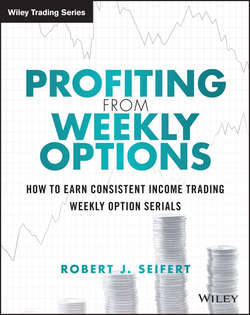Читать книгу Profiting from Weekly Options - Seifert Robert J. - Страница 13
Chapter 1
Market Psychology: The Mind-Set of a Trader
The Commodity Bubble of 2008: Price Can Never Go Down Again
ОглавлениеThe housing bubble has gotten extensive coverage in all forms of media, so it will not be discussed here. But one of the largest meltdowns in world history was in the works in a parallel universe, the commodity bust of 2008.
The commodity panic was not limited to a specific country or a specific product. Modern trade and the speed of information allowed the panic to spread quickly across the world. The list of culprits is long. Evil speculators, farmers who overplanted fields, hoarders who withheld goods from the market, consumers who raced each other for more goods than they could possible use, and, of course, the pigs on Wall Street. Rather than take the time to go over each individual market, the focus of this story will be placed on the biggest commodity market in the world – crude oil.
Crude oil has been a major source of energy for more than 150 years. Fortunes have been made and lost acquiring it. Nations have been built on its back. Nations have gone to war to acquire it. It is a god of wealth to some and the devil for others, but one thing is clear: Twenty-first-century society needs crude oil.
The bubble in crude oil started as countless panics that preceded it, with a gradual inflation of price. Less than 10 years before the bubble burst, the price of crude oil was $17 a barrel.
Iraq was selling as much as it could produce to cover its costly mistake with Kuwait and the resulting war with the US-led coalition. In addition, financial problems in the Far East reduced the demand, making it unprofitable to recover crude from marginal fields.
Demand was not suppressed for long, though, and crude oil prices reached $60 a barrel in June 2005. By the summer of 2006, crude oil futures at the NYMEX peaked at $77 a barrel. After the summer surge, prices retreated and closed on New Year's Eve at $63. However, the uptrend did not halt for long. In September 2007, crude took out the previous year's high and closed at over $80 a barrel.
Multiple factors were cited for the increase in price.
US oil reserves had fallen to dangerous levels, OPEC was reducing production, leftist rebels had attacked and destroyed pipelines in Mexico, an El Nino was predicted, the US dollar was getting pummeled, there was social unrest in Turkey, and Elvis had been sighted in Reno. In November 2007, oil hit $90 a barrel on fears of social unrest in Turkey; the US dollar was getting pummeled. Every bit of news, no matter how bizarre and unrelated, was a reason to buy oil.
On January 2, 2008, crude hit the magic $100 a barrel level. Prices continued to skyrocket throughout the spring and early summer. Finally, on July 11, 2008, oil peaked at $148 a barrel. Now under extreme pressure from the public, President George W. Bush issued an executive order on July 14 removing the ban on offshore drilling that had been in place since 1990. This was largely a political tool, as it did not change production or distribution capacity. By the end of July, oil had retreated to $125. It appeared that the worldwide demand for oil, which six months before could never be satisfied, was now overwhelmed by supply. The global meltdown in housing prices further reduced the amount petroleum by-products needed in construction.
Throughout the fall, oil prices continued to collapse, as the global stock markets plummeted and cash was poured into US Treasury Bonds. The world didn't seem to care that the yield on the 30-year investment was less than 3 percent, the lowest return in 80 years. The cash price of West Texas crude oil bottomed at $38 a barrel on December 21, 2008. In less than six months, the price had fallen by 75 percent, and trillions of dollars had been lost.
Who was to blame for this unprecedented implosion?
Well, according to testimony before congressional committees, the government claimed that there was a single source – the usual suspects, the greed on Wall Street. On June 3, 2009, testimony before the Senate Committee on Commerce, Science, and Transportation, former director of the CFTC Division of Trading & Markets Michael Greenberger fingered the Atlanta-based Intercontinental Exchange founded by Goldman Sachs, Morgan Stanley, and British Petroleum as the agency playing a key role in the speculative run-up of oil futures prices traded off of the regulated futures exchanges in London and New York. In January 2011, crude oil reached the $100 a barrel mark once again.
